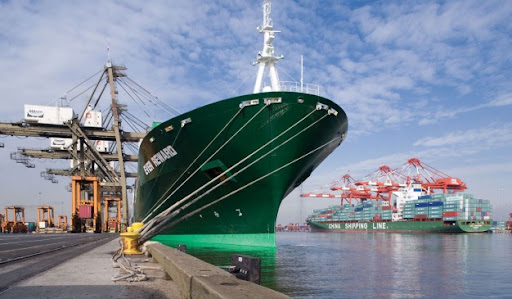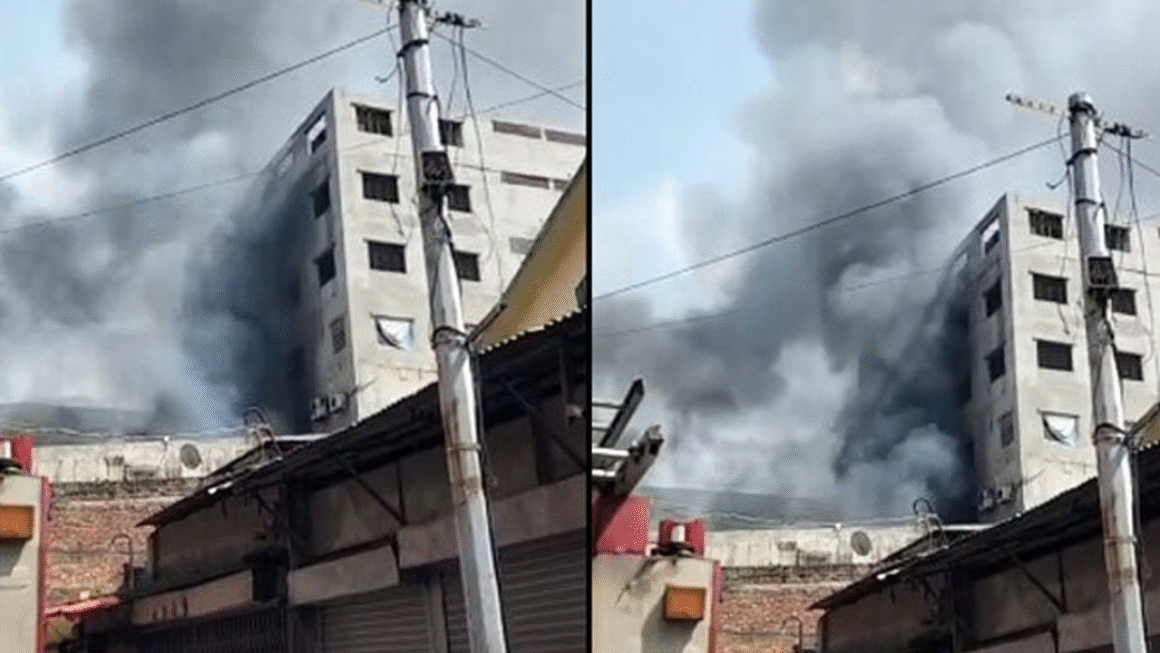 Overview of Mongla Port in Khulna-
Overview of Mongla Port in Khulna-
Mongla Port in Khulna is the second largest and busiest seaport in Bangladesh, following the Chittagong Port. Located on the eastern bank of the Pashur River in Bagerhat District, within the Khulna Division, Mongla plays a pivotal role in international maritime trade, import-export operations, and regional economic development.
This port serves as a critical gateway to the southwestern region of Bangladesh, offering access to the Sundarbans and providing logistics for industries, power plants, and economic zones spread across Khulna and its neighboring districts.
Geographical Location of Mongla Port-
Mongla Port is located approximately 48 kilometers south of Khulna city and lies within the Mongla Upazila of Bagerhat District. It is strategically positioned at the confluence of the Pashur and Mongla Rivers, making it a tide-dominated estuarine port with natural depth to accommodate medium-sized sea-going vessels.
GPS Coordinates: 22.4889° N, 89.6007° E
The port enjoys proximity to the Sundarbans, a UNESCO World Heritage Site, and serves as a vital point for transportation and tourism operations in the delta region.
History and Development of Mongla Port-
Originally known as Chalna Port, Mongla Port’s early operations date back to 1950. Due to increased siltation and navigational difficulties at the Chalna Anchorage, port activities were shifted downstream to Mongla in 1954. Since then, the port has undergone significant modernization and expansion.
In the post-independence era of Bangladesh, the Mongla Port Authority (MPA) was established to oversee the management and development of the port under the Ministry of Shipping. The MPA continues to play a central role in expanding the port’s operational capacity and international connectivity.
Facilities and Infrastructure at Mongla Port-
Mongla Port has steadily improved its infrastructure to cater to rising cargo demands and international standards. Major facilities include:
- 17 jetties and multiple mooring points
- A container terminal with container-handling equipment
- Transit sheds and covered storage areas
- Open storage yards and bonded warehouse facilities
- Tugboats and pilotage services
- Port security and customs office
- Port health and immigration facilities
The port supports handling of general cargo, containerized goods, bulk commodities (like fertilizer, coal, cement clinker), and RoRo (Roll-on/Roll-off) cargo.
Connectivity and Access to Mongla Port-
Road, rail, and river networks make Mongla Port highly accessible. The Khulna-Mongla highway provides a smooth road link to the port, while inland waterways connect it with Dhaka and other districts. The Padma Bridge has further enhanced road transport between Dhaka and Mongla.
Additionally, the Khulna-Mongla rail line, inaugurated in recent years, enables efficient cargo movement to and from inland destinations. The port is also supported by Mongla Airport, which is under development for regional cargo flights and air access.
Types of Cargo Handled at Mongla Port-
Mongla Port handles a variety of cargo types:
- Bulk cargo – coal, fertilizer, cement clinker, wheat, and sugar
- Containerized cargo – electronics, garments, machinery, perishable goods
- Liquid cargo – petroleum, lubricants
- Project cargo – power plant components, construction materials
- RoRo vessels – automobiles and heavy equipment
The port has recently seen increased import of motor vehicles and components for coal and LNG power plants in Khulna and Rampal.
Role in Regional and International Trade-
Mongla Port in Khulna has emerged as a significant hub for regional trade, especially for southwest Bangladesh. Its growing importance is evident in the following areas:
- Export gateway for jute, frozen shrimp, garments, and leather goods
- Strategic backup port to Chittagong during congestion
- Part of the BIMSTEC and BBIN regional trade routes
- Used by neighboring India, Nepal, and Bhutan under regional connectivity agreements
Environmental Challenges and Conservation Efforts-
As Mongla Port lies near the ecologically sensitive Sundarbans mangrove forest, it faces scrutiny regarding environmental management. Concerns include:
- River siltation and need for regular dredging
- Pollution from ship waste and oil spill risks
- Mangrove conservation and biodiversity protection
The Mongla Port Authority, in collaboration with environmental agencies, has taken steps toward:
- Eco-friendly port practices
- River training and sustainable dredging
- Ship waste management systems
- Sundarbans buffer zone regulations
Economic Impact of Mongla Port-
Mongla Port significantly contributes to the national and regional economy:
- Generates revenue through customs duties and port charges
- Creates direct employment for thousands of workers
- Supports growth of industries, EPZs (Export Processing Zones), and private economic zones in Khulna
- Facilitates power projects such as Rampal Power Plant and Payra LNG Terminal
The government’s plan to transform Mongla into a smart port will further enhance its economic contribution.
Recent Modernization and Future Expansion-
Several development projects are underway to modernize Mongla Port:
- Smart Port initiative – digital operations and port automation
- New container terminal construction
- Procurement of advanced cargo handling equipment
- Expansion of jetty and warehouse facilities
- River dredging to improve navigability
International support from India, China, and the World Bank is aiding in Mongla’s modernization drive.
Nearby Attractions and Tourism Potential-
Due to its proximity to the Sundarbans, Mongla Port is also a popular point for tourism and eco-travel:
- Sundarbans Safari Tours from Mongla ghat
- Visit to Karamjal Wildlife Center
- Nearby Shat Gombuj Mosque in Bagerhat
- Cruises and eco-resorts along the Pashur River
Tourism infrastructure has seen steady growth in recent years, promoting Mongla as a port-cum-tourism destination.
Administration and Governance of Mongla Port-
Mongla Port is managed by the Mongla Port Authority (MPA) under the Ministry of Shipping, Government of Bangladesh. The Chairman of MPA oversees operations, strategic planning, and liaison with national and international stakeholders.
Key roles of MPA:
- Port operations and berth management
- Revenue collection and cargo logistics
- Port development and public-private partnerships
- Regulatory compliance and environmental stewardship
Statistics and Performance of Mongla Port-
- Annual cargo throughput (2023): 11.7 million metric tons
- Container throughput: 140,000+ TEUs
- Ship arrivals/year: Over 600 foreign vessels
- Port area: Over 9,000 acres including inland yards
- Revenue earned (2022-2023): BDT 1,200+ crore
The port has shown consistent growth in traffic and revenue over the past decade.
Comparison with Other Ports in Bangladesh
| Port Name | Location | Type | Capacity |
|---|---|---|---|
| Chittagong Port | Chattogram | Deep Sea Port | Highest in BD |
| Mongla Port | Khulna | Riverine Port | Second Largest |
| Payra Port | Patuakhali | Sea Port | Under Expansion |
Mongla stands out due to its proximity to industrial zones and logistical flexibility.
Final Thoughts on Mongla Port in Khulna-
Mongla Port in Khulna has evolved from a regional anchorage point into a vital seaport contributing significantly to Bangladesh’s maritime trade, industrial development, and regional connectivity. With modern infrastructure, growing international relevance, and proximity to the Sundarbans, Mongla is uniquely positioned to support the country’s economic ambitions.
The government’s focus on smart port initiatives, public-private partnerships, and cross-border trade through Mongla has opened new opportunities for businesses, exporters, and logistics service providers. As Bangladesh continues its journey toward becoming a global trade player, Mongla Port will undoubtedly play a pivotal role.
Frequently Asked Questions (FAQs) about Mongla Port in Khulna-
- What is Mongla Port famous for?
-Mongla Port is known for being Bangladesh’s second busiest seaport and a vital gateway for import and export activities in the southwestern region. - Where is Mongla Port located?
-Mongla Port is situated in Mongla Upazila of Bagerhat District, approximately 48 kilometers from Khulna city. - What kind of cargo does Mongla Port handle?
It handles container cargo, bulk commodities, RoRo shipments, liquid cargo, and project cargo. - Is Mongla Port open to international shipping?
-Yes, Mongla Port is open to international trade and is regularly used by foreign-flagged vessels. - How does Mongla Port benefit the economy?
-It supports trade, generates revenue, boosts industrialization, and provides employment across the Khulna region. - Can tourists visit Mongla Port and Sundarbans from here?
–Yes, Mongla is a common launch point for Sundarbans tours and eco-tourism activities.












